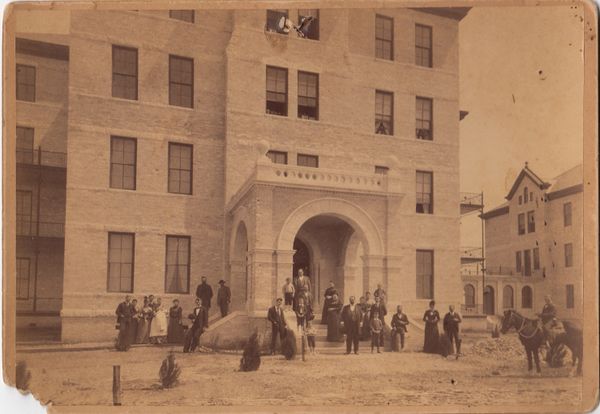Difference between revisions of "Portal:Featured Image Of The Week"
From Asylum Projects
M-Explorer (talk | contribs) |
M-Explorer (talk | contribs) |
||
| (297 intermediate revisions by the same user not shown) | |||
| Line 1: | Line 1: | ||
{{FIformat | {{FIformat | ||
| − | |Image= | + | |Image= sanantonio3.jpg |
| − | |Width= | + | |Width= 600px |
| − | |Body= | + | |Body= In 1889 the [[San Antonio State Hospital|Texas legislature passed a bill]] establishing a state mental institution to serve Southwest Texas. The new facility was to occupy at least 640 acres and be capable of housing 500 patients. It was to be known as the Southwestern Insane Asylum (not the Southwestern Lunatic Asylum, as it has sometimes been called). A site was selected five miles south of San Antonio and $200,000 was appropriated for the new hospital. The facility began operation on April 6, 1892 with a capacity of 200 patients. |
}} | }} | ||
Revision as of 04:01, 22 March 2020
Featured Image Of The Week
In 1889 the Texas legislature passed a bill establishing a state mental institution to serve Southwest Texas. The new facility was to occupy at least 640 acres and be capable of housing 500 patients. It was to be known as the Southwestern Insane Asylum (not the Southwestern Lunatic Asylum, as it has sometimes been called). A site was selected five miles south of San Antonio and $200,000 was appropriated for the new hospital. The facility began operation on April 6, 1892 with a capacity of 200 patients.
